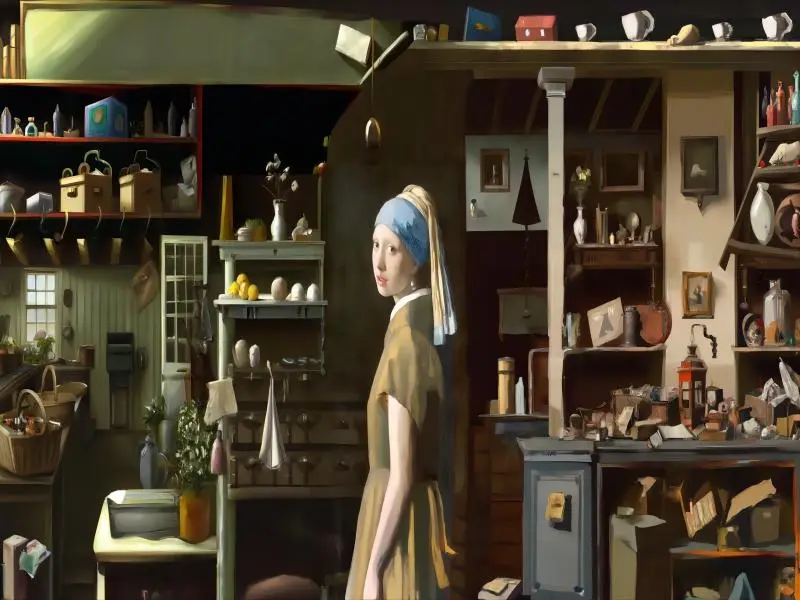- DALL-E, first released in January 2021, came before other text-to-image generative AI art platforms by Stability AI and Midjourney.
- By the time DALL-E 2 was released in 2022, OpenAI opened a waitlist to control who got to use the platform after criticism that DALL-E could generate photorealistic explicit images and showed bias when generating photos.
- In September 2023, OpenAI announced the latest addition to the DALL-E series, DALL-E 3, which can understand “significantly more nuance and detail” than its predecessors.
DALL-E, a name inspired by the fusion of “Salvador Dali” and “Pong,” is a groundbreaking AI model developed by OpenAI that has revolutionised the way we think about art and creativity. This blog post will take you through the release data and history of DALL-E, exploring its evolution from inception to its current state as a tool that blurs the lines between human imagination and artificial intelligence.
The genesis of DALL-E
DALL-E’s story began in early 2021 when OpenAI first introduced the model to the public. The initial release was a significant moment in AI history, as it showcased the potential for AI to understand and generate complex images from textual descriptions. DALL-E 1.0 was trained on a vast dataset of images and associated text, allowing it to create highly detailed and often surreal images that matched the input prompts.
The surge of interest
Following its release, DALL-E quickly gained widespread attention. Artists, designers, and the general public were captivated by the AI’s ability to generate images that were both imaginative and technically proficient. The model’s output ranged from whimsical interpretations of concepts to eerily accurate renditions of historical scenes and abstract ideas.
Also read: AI: The opportunities and the threats
Evolution of the DALL-E series
All three of DALL-E’smodels—DALL-E2, and DALL-E 3—are text-to-image models created with deep learning techniques that let users create digital images from natural language. There are quite a few differences aside from that. For instance, the first version of DALL-E, which was disclosed by OpenAI in a blog post in 2021, used a modified version of GPT-3 to create images from text.
Discrete Variational Auto-Encoder (dVAE) technology was specifically utilised by DALL-E 1. The Vector Quantised Variational AutoEncoder was used in research by Alphabet’s DeepMind division, which served as the basis for this technology.
In 2022, a year later, OpenAI revealed DALL-E 2, the replacement for DALL-E. DALL-E 2 combined ideas, characteristics, and styles to produce higher-resolution, more realistic images.
DALL-E 2 enhanced the methods employed to accomplish this feat. For instance, the Contrastive Language-Image Pre-training (CLIP) model, which was trained on 400 million labelled images, provides data integration for the stable diffusion model used by the DALL-E 2 to produce images of higher quality. This model (CLIP) determines the best caption for a generated image, assisting in the evaluation of DALL-E’soutput.
This brings us to the last year. In September 2023, OpenAI announced the latest addition to the DALL-E series, DALL-E 3. According to the team at OpenAI, DALL-E 3 can understand “significantly more nuance and detail” than its predecessors. Namely, the model follows complex prompts with better accuracy and generates more coherent images. It also integrates into ChatGPT – another OpenAI generative AI solution.
Also read: How to invest in Perplexity AI?
The impact on the art world
DALL-E’s impact on the art world has been profound. It has sparked debates about the nature of creativity, authorship, and the role of technology in the creative process. Some artists have embraced DALL-E as a tool for collaboration, using it to generate ideas or to produce pieces that would be impossible to create by hand. Others have expressed concerns about the potential for AI to displace human artists and the ethical implications of using AI in creative work.
Commercial and ethical considerations
As DALL-E’s capabilities grew, so did the commercial potential. Companies began to explore how DALL-E could be used in advertising, product design, and other industries. However, these commercial applications raised ethical questions about the ownership of AI-generated content and the potential for misuse, such as creating deepfakes or infringing on intellectual property rights.
The future of DALL-E and AI art
Looking to the future, DALL-E and similar AI models are expected to continue evolving, becoming more sophisticated and responsive to user input. As AI art becomes more prevalent, we’ll likely see the development of new norms, laws, and ethical guidelines to govern its use.
DALL-E’s journey from a novel concept to a tool with real-world applications is a testament to the rapid advancement of AI technology. As we continue to explore the intersection of art and AI, DALL-E serves as a reminder of the vast potential—and the significant challenges—that lie ahead. Whether used as a creative aid, a research tool, or a source of philosophical inquiry, DALL-E is a remarkable chapter in the ongoing story of human innovation and our quest to understand the nature of creativity itself.

